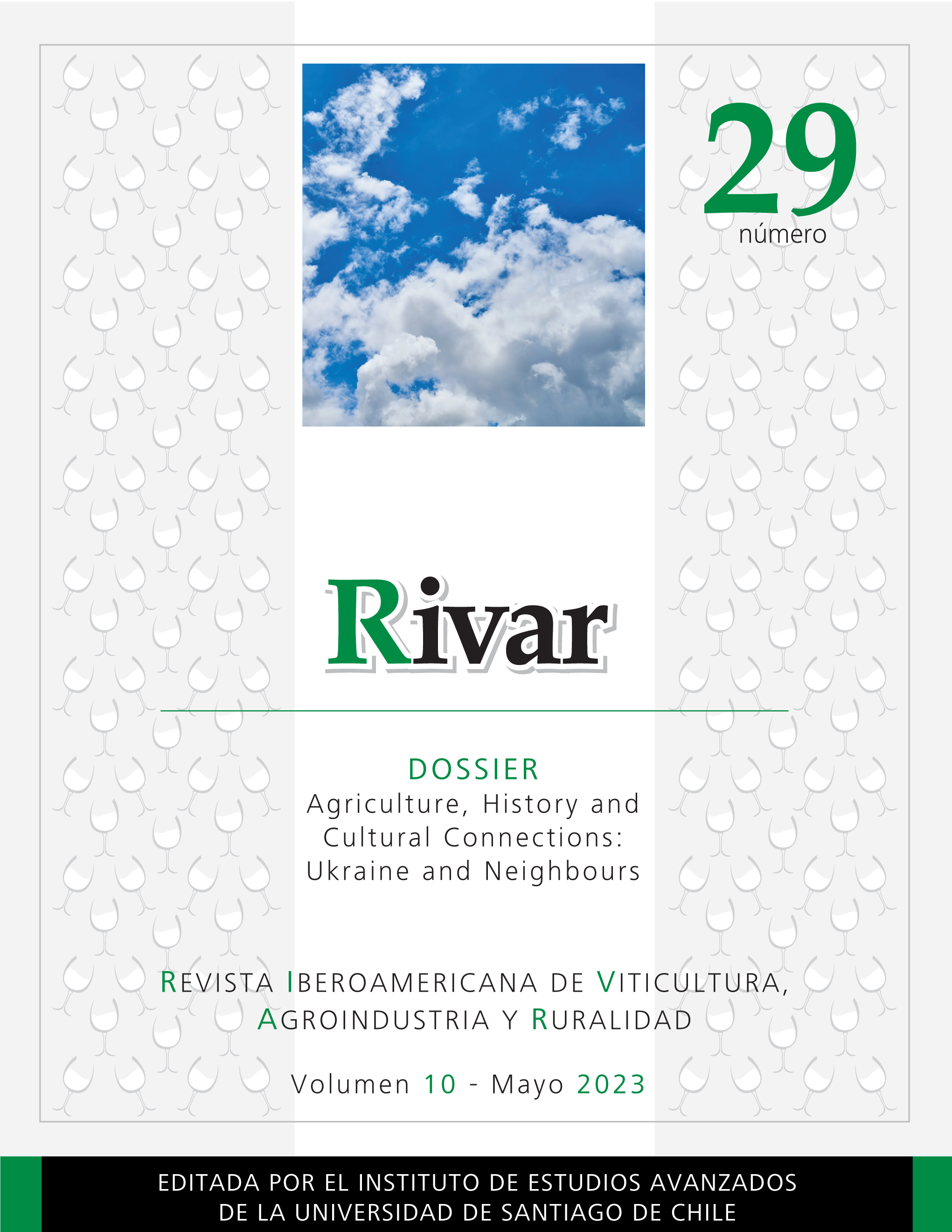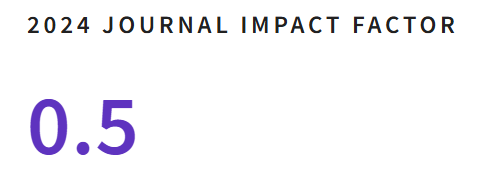The Formation of Statehood Among the Kalmyks in the Volga Region in the XVII-Early XVIII Centuries
DOI:
https://doi.org/10.35588/rivar.v10i29.5796Palabras clave:
Kalmyk Khanate, Estado ruso, Estado Kalmyk, soberanía política, tratado shertResumen
Analizaremos los eventos históricos que llevaron a la formación del Estado entre los Kalmyks. Para ello, examinamos la historia de la formación del Estado entre los Kalmyks en la región del Volga en los siglos XVII y principios del XVIII. Muchos historiadores han abordado el tema, pero varios temas de la historia del Estado de Kalmyk siguen siendo controvertidos. Dado que el tema de la formación del Estado de Kalmyk tiene sus propias subestimaciones y áreas hasta ahora inexploradas, la necesidad de su divulgación completa sigue siendo relevante. En el proceso de investigación se utilizaron diferentes métodos científicos: el método de análisis diacrónico, de periodización histórica, el modelado mental y también el método retrospectivo. Señalamos que la política del Kalmyk Taishi con el Estado ruso fue un medio para lograr la estabilidad dentro de la sociedad Kalmyk, un acelerador de la formación del Estado Kalmyk en la región del Volga. La investigación concluye que, entre las muchas razones de la migración de Kalmyks a la región del Volga, se puede destacar la principal: el hecho de que los Kalmyks sintieron la necesidad de un espacio territorial para crear su propio Estado soberano.
Descargas
Referencias
Badmaeva, E.N. (2018). “Korenization in National Autonomies of Southern Russia in the 1920-1930s: A Historical Experience of Administrative Apparatus Formation and Policy Implementation.” Oriental Studies 38(4): 11-23. DOI https://doi.org/10.22162/2619-0990-2018-38-4-11-23
Benson, E.S. (2018). “Re-situating Fieldwork and Re-Narrating Disciplinary History in Global Mega-Geomorphology.” Studies in History and Philosophy of Science Part A 70: 28-37. DOI https://doi.org/10.1016/j.shpsa.2018.05.006
Bougdaeva, S. and Isaacs, R. (2018). “Nomads Under Arrest: The Nation-Building and Nation-Destroying of Kalmyk Nomads in Russia.” Communist and Post-Communist Studies 51(4): 375-385. DOI https://doi.org/10.1016/j.postcomstud.2018.10.007
Burghardt, A. (2019). “Picturing Non-Russian Ethnicities in the Journals Sovetskoe foto and SSSR na stroike (1920s-1930s).” Russian Literature 103/105: 209-233. DOI https://doi.org/10.1016/j.ruslit.2019.04.009
Chetyrova, L. and Znamensky, A. (2019). “Integration of Central Asian Peoples into the Empire: Oyrat-Kalmyk Experience.” Istoriya 10(8): 56-72. DOI https://doi.org/10.18254/s207987840006068-3
Cinnirella, F. and Schueler, R. (2018). “Nation Building: The Role of Central Spending in Education.” Explorations in Economic History 67: 18-39. DOI https://doi.org/10.1016/j.eeh.2017.08.002
Fossheim, H.J. (2019). “Past Responsibility: History and the Ethics of Research on Ethnic Groups.” Studies in History and Philosophy of Science Part C: Studies in History and Philosophy of Biological and Biomedical Sciences 73: 35-43. DOI https://doi.org/10.1016/j.shpsc.2018.11.003
Gunaev, E. (2014). “The Principle of the Social State in the Constitution of a Subject of the Russian Federation: The Case Study of the Republic of Kalmykia.” Oriental Studies 7(3): 184-189.
Johnson, N.D. and Koyama, M. (2017). “States and Economic Growth: Capacity and Constraints.” Explorations in Economic History 64: 1-20. DOI https://doi.org/10.1016/j.eeh.2016.11.002
Kichikov, M.L. (1994). Formation of the Kalmyk Khanate. Elista, Kalmyk Book Publishing House.
Kitinov, B.Y. (2018). “On the Question of the Role of Religion in the Ethnic History of the Oirats.” Bulletin of the Kalmyk Institute for Humanitarian Research RAS 35(1): 13-21.
Li, J.; Dodson, J.; Yan, H.; Zhang, D.D.; Zhang, X.; Xu, Q.; Lee, H.F.; Pei, Q.; Cheng, B.; Li, Ch.; Ni, J.; Sun, A.; Lu, F., and Zong, Y. (2017). “Quantifying Climatic Variability in Monsoonal Northern China Over the last 2200 Years and its Role in Driving Chinese Dynastic Changes.” Quaternary Science Reviews 159: 35-46. DOI https://doi.org/10.1016/j.quascirev.2017.01.009
Maksimov, K.N. (2017). “From the Khrushchev Thaw to Political Rehabilitation of the Kalmyk People: Restoration of the Autonomy.” Oriental Studies 29(1): 38-47.
Martinkovic, M. (2021). “Development of the Party System and the Character of Coalition Governments in Slovakia in the Years 2006-2016.” Vestnik Tomskogo Gosudarstvennogo Universiteta-Filosofiya-Sotsiologiya-Politologiya-Tomsk State University Journal of Philosophy Sociology and Political Science 60: 194-205.
Mokyr, J. (2018). “The Past and the Future of Innovation: Some Lessons from Economic History.” Explorations in Economic History 69: 13-26. DOI https://doi.org/10.1016/j.eeh.2018.03.003
Preobrazhenskaya, P.S. (1960). “From the History of Russian-Kalmyk Relations in the 50-60s of the 17th Century.” Notes of the Kalmyk Scientific Research Institute of Language, Literature and History 1: 49-83.
Salaev, B.K.; Suseeva, D.A., and Esenova, T.S. (2018). “Activity of V.N. Tatishchev on the Arrangement of the Kalmyks When He Was a Governor of Astrakhan and the Head of the Kalmyk Commission (1741-1745).” Bylye Gody 49(3): 980-991.
Seok, J.O.; Jeong, M.J.; Seon, S.H., and Chung, J.K. (2021). “Sarah Barry: A Spiritual Beacon in Modern Korea.” Foundations of Science. DOI https://doi.org/10.1007/s10699-021-09805-1
____. (2020). “Missionary John Van Neste Talmage: Response to the Japanese Occupation in Korea (1910-1945).” Astra Salvensis 1: 167-191.
Tepkeev, V.T. and Sanchirov, V.P. (2016). “Kalmyk-Tibetan Relations at the Turn of the XVII-XVIII.” Bulletin of the Kalmyk Institute for Humanities of the Russian Academy of Sciences 26(4): 12-20.
Toropitsyn, I.V.; Kundakbaeva, Z.B., and Suseeva, D.A. (2019). “‘For Sound Reconciliation Between the Kaisak and Kalmyk Peoples, it is Necessary to Please Them’: A Mediating Means in the Mid-18th-Century Steppe Diplomacy.” Oriental Studies 45(5): 75-760.
Tsyuryumov, A.V. and Kyrapov, A.A. (2019). “From the History of Kalmyk-Tibetan Contacts.” Bulletin of the Kalmyk Institute for Humanities of the Russian Academy of Sciences 6: 1050-1061.
Wang, C.Z.; Su, M.J.; Li, Y.; Chen, L.; Jin, X.; Wen, S.; Tan, J.; Shi, M., and Li, H. (2019). “Genetic Polymorphisms of 27 Yfiler Plus Loci in the Daur and Mongolian Ethnic Minorities from Hulunbuir of Inner Mongolia Autonomous Region, China.” Forensic Science International: Genetics 40: e252-e255. DOI https://doi.org/10.1016/j.fsigen.2019.02.003
Wu, R.; Li, R.; Wang, N.; Peng, D.; Li, H.; Zhang, Y.; Zheng, C., and Sun, H. (2019). “Genetic Polymorphism and Population Structure of Torghut Mongols and Comparison with a Mongolian Population 3.000 Kilometers Away.” Forensic Science International: Genetics 42: 235-243. DOI https://doi.org/10.1016/j.fsigen.2019.07.017
Xiaoyan, G.; Ziruia, J.; Dengsheng, W.; Qingsheng, P., and Jianping, L. (2019). “Nomadic Path Optimizing Model under Multi-Factor Constraints.” Procedia Computer Science 162: 688-695. DOI https://doi.org/10.1016/j.procs.2019.12.039









